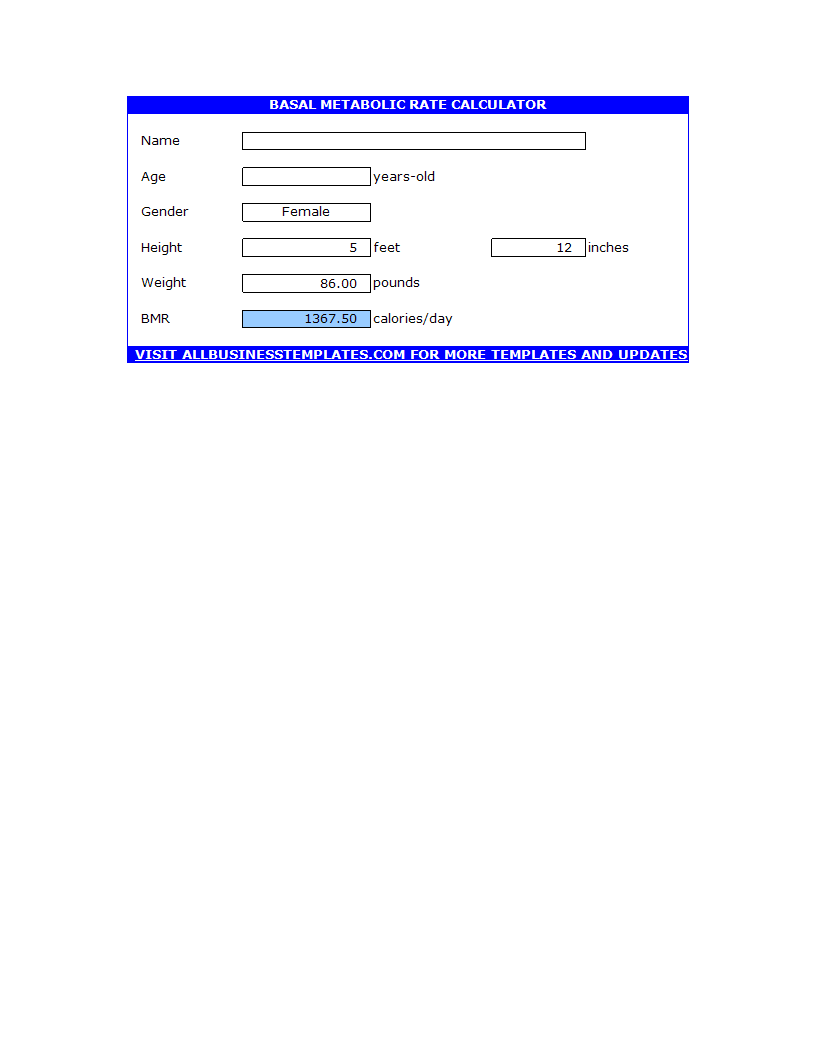

The paper behind the latest update (Mifflin et al) to the BMR formula states all participants in their study fall within the 'normal' and 'overweight' body mass index (BMI) categories, and so the results also do not necessarily apply to those in the 'underweight' or 'obese' BMI categories. As muscle and fat require differing amounts of calories to maintain, the TEE estimates will not be accurate for such cases. Later work produced BMR estimators that accounted for lean body mass.Īs the BMR equations do not attempt to take into account body composition, identical results can be calculated for a very muscular person, and an overweight person, who are both the same height, weight, age and gender.

published an equation more predictive for modern lifestyles in 1990. The Harris-Benedict equation sprang from a study by James Arthur Harris and Francis Gano Benedict, which was published in 1919 by the Carnegie Institution of Washington in the monograph A Biometric Study Of Basal Metabolism In Man. The Harris–Benedict equations revised by Mifflin and St Jeor in 1990: MenīMR = (10 × weight in kg) + (6.25 × height in cm) - (5 × age in years) + 5īMR = (10 × weight in kg) + (6.25 × height in cm) - (5 × age in years) - 161 The 95% confidence range for men is ☒13.0 kcal/day, and ☒01.0 kcal/day for women. Men: BMR 88.362 + (13.397 x weight in kg) + (4.799 x height in cm) - (5.677 x age in years) Women: BMR 447.593 + (9.247 x weight in kg) + (3.098 x height in cm) - (4.330 x age in years) Online BMR Calculator Put your height, weight, and age into our online calculator to find your basal metabolic rate with the addition of daily activity. The Harris–Benedict equations revised by Roza and Shizgal in 1984. The original Harris–Benedict equations were published in 19. The Harris-Benedict equation may be used to assist weight loss - by reducing the kilocalorie intake number below the estimated maintenance intake of the equation. The estimated BMR value may be multiplied by a number that corresponds to the individual's activity level the resulting number is the approximate daily kilocalorie intake to maintain current body weight. The Harris–Benedict equation (also called the Harris-Benedict principle) is a method used to estimate an individual's basal metabolic rate (BMR). Method used to estimate an individual's basal metabolic rate


 0 kommentar(er)
0 kommentar(er)
